I’m looking forward to talking with Golf Course Architects Keith Rhebb of Rhebb Golf Design & Riley Johns of Integrative Golf Design. The Society had a spring gathering in 2019 and Rolling Green CC was one of the courses we played. Riley & Keith happened to be involved with restoration/renovation. We will delve into the restoration/renovation of Rolling Green CC, Winter Park 9, and Forest Dunes 10 hole course. We have an array of questions and very interesting and informative answers by the young duo. Riley and Keith have prior experience working with Coore/Creenshaw & Renaissance Golf Design.
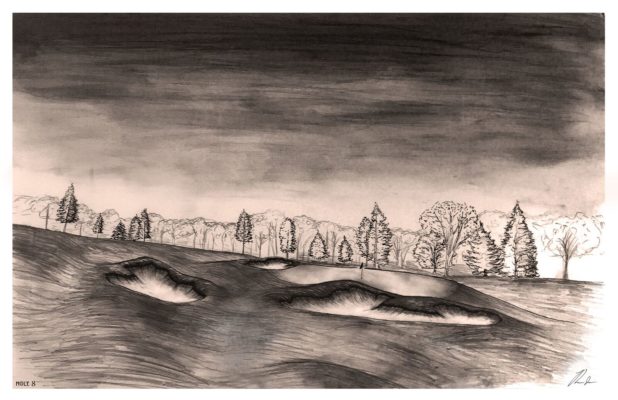
TWG- So much of life is timing. How did you know it was time to forge your own path in the golf business?
RJ-It wasn’t so much a planned decision, but rather a gradual evolution born out of the necessity to simply conduct business. I began receiving calls and inquiries from some local golf courses regarding small projects here and there and I needed a mode in which to get paid. It was around this time that I also began sub-contracting services out to other architects in the form of shaping or drafting. After a certain point, it just makes sense to formalize oneself into a company for tax, insurance, and bookkeeping reasons.
KR- Honestly, I wasn’t looking to forge my own path into the industry. I would have been really satisfied with spending the rest of my career as a shaper, but there was a group of people who opened a door. I knew that with the right team, we could succeed at taking the next steps. I’m glad I took that leap of faith. It’s enhanced by knowledge and appreciation for golf course design and the golf business as a whole.
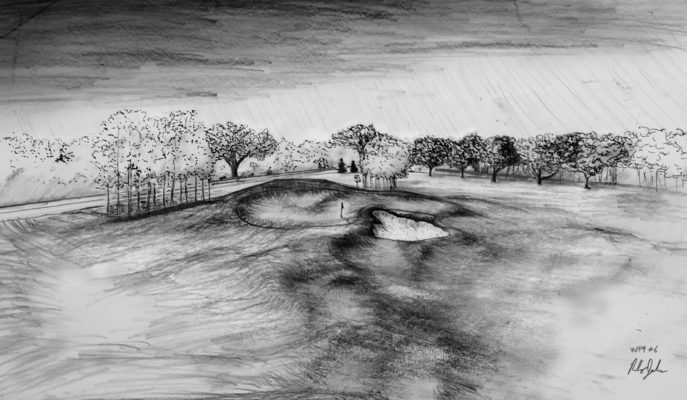
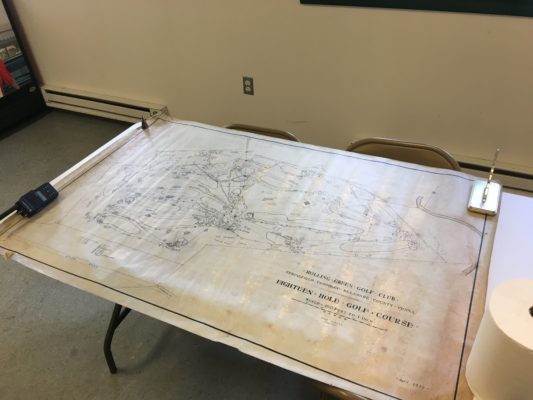
TWG- The Society had a Philly gathering last May and Rolling Green CC where you both are currently consulting. It blew many of us away with how good it is. It’s a great responsibility working on classic courses. Do either of you ever get nervous with such a tall order?
RJ- Not so much nervous as excited. Seeing the potential at a place like Rolling Green, or the potential in a raw piece of ground like Forest Dunes, it is exciting to have an opportunity to pursue our craft on many different levels and sites. The responsibility is great, correct, but that just comes with the territory in golf architecture regardless of the client or site.
KR- What rings true to me about your observations is that everyone who sees Rolling Green is blown away with how good it is. There is a great responsibility with such a project. Finding the right balance between respecting all that is good while refining it in ways that make it even better. The nerve-wracking part is ensuring that we’ve communicated that to the membership so that they can understand the process and also envision the final product. Speaking for myself, I’m better at building golf than communicating about it!
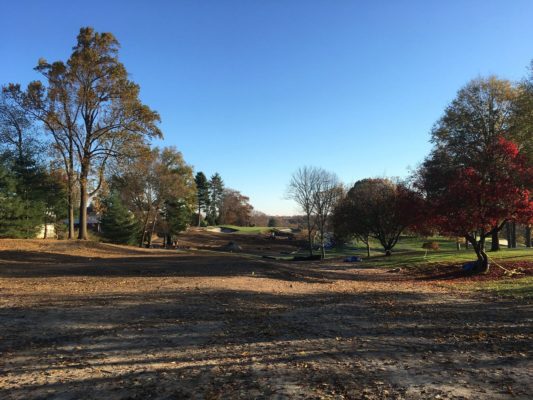
TWG- TWGS member (Mayday Malone), has a few questions regarding RG. Describe the research you did into the origins of Rolling Green & the technology you applied to map it on the existing course?
RJ- We knew that a thoroughly researched, evidenced-based design approach was critical when trying to understand accurately the early years of Rolling Green’s history. The information we gathered was essentially going to become the foundation, or at least starting point, for all future discussions.
Keith and I embarked on a six-month research and fact-finding mission. We investigated and assembled as much pertinent historical material related to William Flynn and Rolling Green as possible. We cataloged historical plans, articles, aerials, drawings, and ground photos found in newspapers, magazines, and photo archives located in both public and private institutions. Our search even led us to finding the course’s original 1926 hand-drawn linen plan which was stashed away in the basement archives of local engineering firm’s office located in Philadelphia, the same firm that worked with William Flynn!
Concluding this extensive six-month research process, we consolidated and digitized all the evidence we had gathered. Once combined, we were able to piece together a comprehensive, true-to-form picture of what Flynn’s original masterpiece looked like during its first few years of existence.
Using forensic-like digital mapping and overlay techniques, we then compared Flynn’s original 1920’s drawings/plans and aerials with today’s site. Layering and analyzing the historic data with hi-resolution Orthoimagery and a sophisticated LiDAR survey plan of the property was the key to understanding the big questions of what was verses what is. Using this overlay process, we were then able to determine the original shapes and sizes and locations of all the original greens, tees, fairways, and bunkers. Moreover, because all of our data was now geo-referenced, we could then go back out onto the golf course and physically GPS those 1926 features in the field.
KR- Riley summed this up perfectly. The process of using technology to look back into the past was very eye opening and even humbling at times. It gave us a great understanding of the 1926 course and baseline off of which we can respect Flynn’s design for the modern game. To this day, we don’t want our finger prints to stand out on William Flynn’s Rolling Green design. When we are finished, our hope is that it will be difficult to distinguish where we started and finished the work.
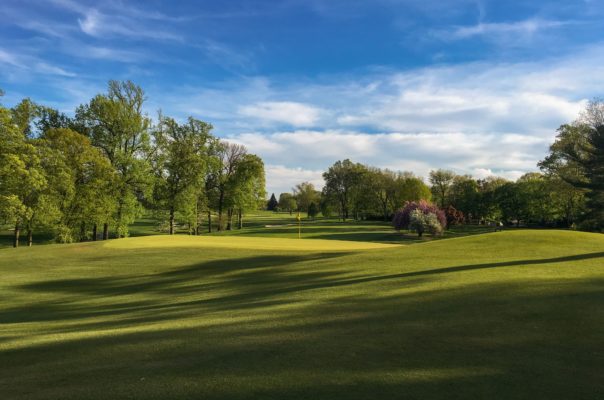
TWG- What are the challenges of making recommendations that diverge from your research?
RJ- It really depends on what the goals and objectives of the project are. Looking at a classic golf course in a modern context is always going to present challenges. I try and find out where on the spectrum the collective conscious of the Club lies. For example, do they consider their golf course a museum piece that is meant to be preserved as faithfully and authentically to the original design as possible, such as a Chicago GC or NGLA for example, or is the Club more open to tasteful modernization enhancements along with the lines of a Cal Club or Pinehurst #2 for example. Both have merit, it just depends on what the Club is looking for.
KR- Again, I agree with Riley. It often comes down to the objectives of the club and its membership. Saying that, we have a set of principles that we hold ourselves to when doing work at Rolling Green. As long as we are operating within those design principles, we can justify making that move-in best faith-outside of the research.
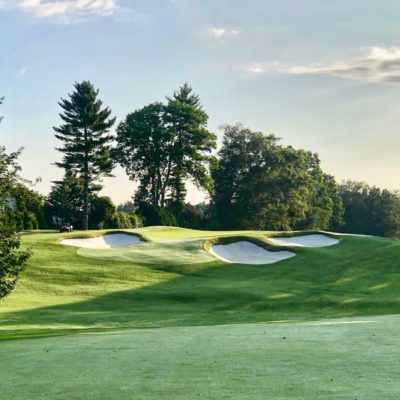
TWG- Brian Chapin (RG keeper), was able to join us for the gathering and he gave a nice talk after the round. I have found a knowledgeable & passionate keeper is very important to successful renovation/restorations. Can you elaborate on the team effort?
RJ- As part of our research process, Keith and I, along with Brian Chapin, visited, played, and made study of William Flynn’s most notable golf courses to better understand his design tendencies and nuances. We were also able to then experience first-hand and observe how modern technology influences the playability on his courses today. These fact-finding research trips also helped inform potential construction, grassing, and mowing practices at Rolling Green. Brian’s contributions to the research, and his input on the final presentation, are both key components to the success of Rolling Green’s restoration efforts.
KR- Brian is one of the reasons why Riley and I took the job at Rolling Green. It’s not always about the course itself; the people you work with and the relationships you build along the way matter. When all parties work together and their strengths complement one another, the course only gets better as a result of that collaboration.

TWG- You both were a part of a $1.2M renovation at the Winter Park 9 in 2016. The course is located in Winter Park, FL and many of the rounds are enjoyed on foot. This renovation seems as though it was the starting point of your careers. Please share your feelings on the WP9 and what it means to you and the game of golf.
JR- The growth of the WP9 has been amazing to watch. Not in my wildest dreams did I think they would be packed wall-to-wall daily with all ages and classes of golfers like they are today. They are now servicing some 50,000 rounds a year which is just incredible to see. It’s also great to witness all the families participating with their young kids learning the game for the first time.
When we first began the design process at WP9, we asked a few questions to ourselves-what is wrong with the game that prevents newcomers from getting hooked? We figured that golf took too long, it cost too much, and the architecture was not engaging enough. So, our objective from day one was to build a course that addressed these three simple problems. It’s neat to see, five years later, those objectives in action.
KR- That’s tough to put into words-for a variety of reasons! Winter Park is a special place and it was really exciting to have the opportunity to bring the knowledge and skill-set we gained from working on some of the great modern-day courses to renovate a municipal course. It shows that not every great course has to be an expensive endeavor. We put out hearts into the process and it’s my hope that people can sense that when they walk off the 9th green. I live in Winter Park and much to my wife’s chagrin, I often drive out of my way to drive by the course. Every time I pass by, I’m thankful for and humbled by the opportunity.
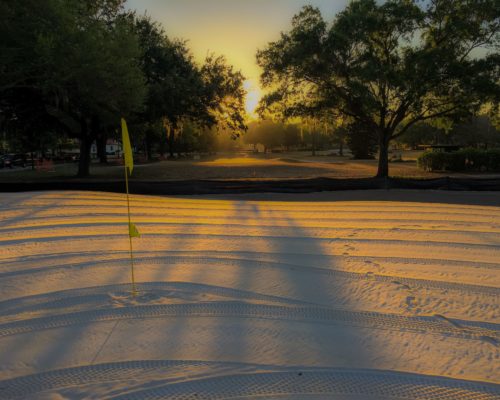
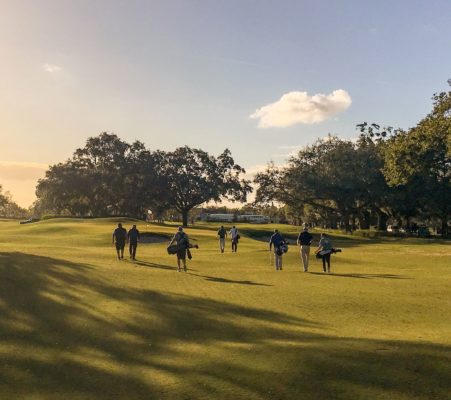
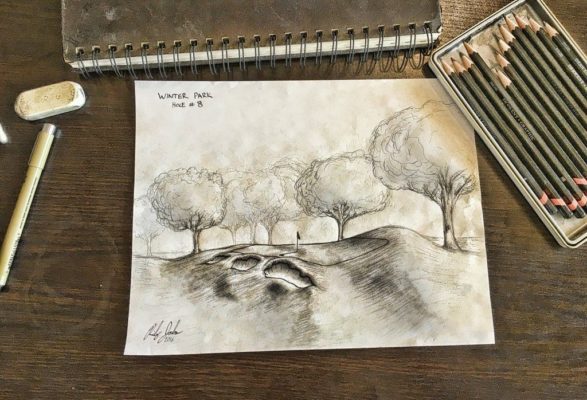
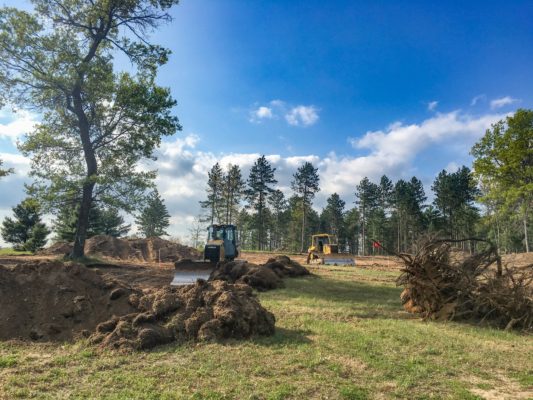
TWG- With the success of the WP9, it really shows that a great location, talented architects, and a great maintenance meld, that golf can be very successful. WP9 has basically uncomplicated the game and has let golf be the focal point. Hopefully some golf investors will take note and replicate a version of this. I would think that the WP9 success, led to the Forest Dunes 10-hole par 3 job?
RJ- Yes, it did. Lew was aware of the success of the WP9 and wanted something similar in genre to compliment his two 18-hole golf courses at Forest Dunes in Michigan. Lew was also keenly aware that Keith and I built WP9 in 3 months and he needed his new short course completed in the same amount of time in order to hit the critical grassing dates. Finishing the grassing on day 83, Lew jokes that we beat our own record by 7 days!
KR- That definitely played a role. I also think that Lew took peace of mind knowing that if he had a question or concern, he could walk out to us for a face-to-face meeting. Having your architects on site mitigates the extra stress of building a new course off of ownership’s shoulders.
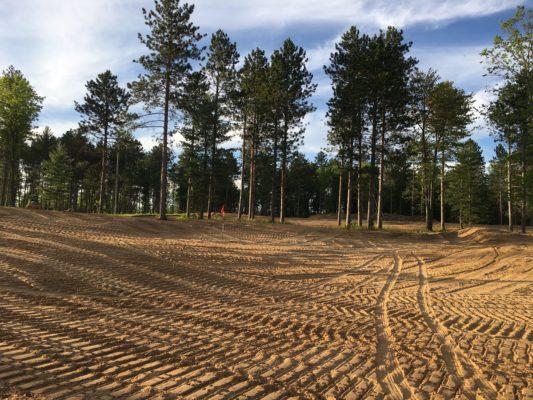
TWG- Your new 10-hole short course opens this year @ Forest Dunes, and many of us are excited to play it. You both built the course in around 83 days and on a shoestring budget. I think this will be a great addition to the property as some folks are not interested in playing 36. My friend Joe Hancock, assisted you on the project. Do you have any stories about Joe or the course that you would like to share?
RJ- Joe was a great addition to the project and we all had a blast building the golf course together. He is also a wealth of knowledge, especially when it comes to his home state of Michigan. For instance, Joe has found a curious loop-hole in the Michigan fish and wildlife laws, where if you physically punch a fish and knock it out, you can actually keep it and cook it. Punching fish bare-handed doesn’t require any kind of licenses because you are not using any type of equipment or aid. You just can’t bait the fish and punch them apparently. Joe can tell you all about his fish punching hobby, it’s incredible.
KR- Riley nailed it and I need to thank him for that laugh with all that’s going on with the COVID-19 crisis.
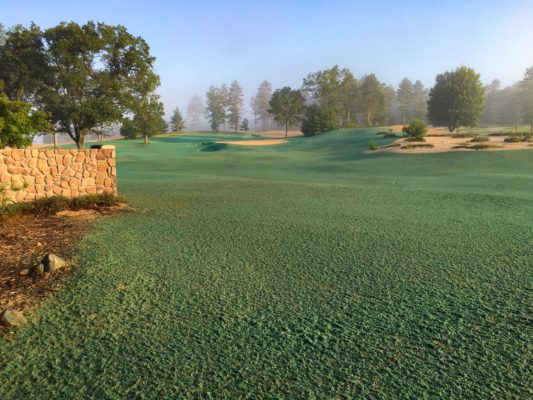
TWG- Speaking of Joe, his question for you, “people view your lifestyle as glamorous”. “What makes it worth it to you being on the road so many days a year?” “Is it the people you work with, the work/sites, or both?“
RJ- Definitely both. Seeing and experiencing new places and cultures is always fun and interesting. Being able to share those experiences with like-minded friends makes it even better. The places we see and the people we meet is a big part of what makes this career so attractive to me personally.
KR- Both…although you can be on a spectacular site and, without the right people around you, be entirely miserable. Over time, this can kill the creative process. Surround yourself with the right people though, and they will bring the best out of you (and you hope to do the same for them)- which only enhances the design and/or build. It’s also rewarding to know that the fun that we have designing and building these courses will lead to long-lasting memories for those who will play on them for years to come.
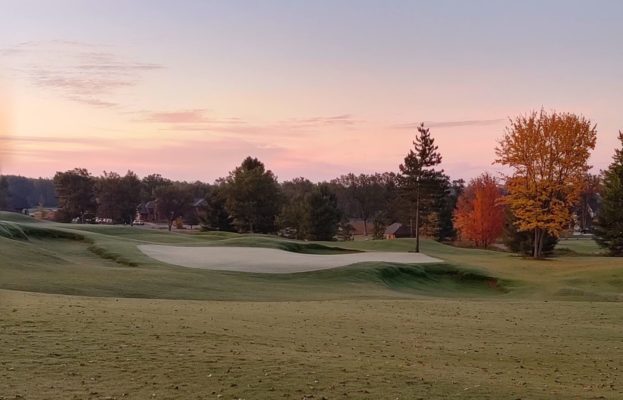
TWG– If you had the choice between 2 properties to build on, would you rather have a sandy soil property with 5ft of elevation change or a property with clay soil that has 80ft of elevation change with ridges, a creek, and other natural features?
RJ- Sandy soil and 5ft of elevation. Way less constraints when drainage and trucking logistics are not a factor.
KR- Flat site with sandy soil!
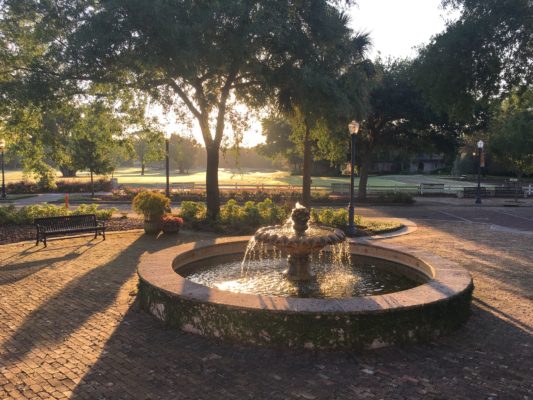
TWG- I happen to enjoy green contours with 4-6% slope or tilt which can be found on many Golden Age courses. Many greens today are being softened, slope wise due to the “Greens Speeds Arms Race”. We are also losing interesting pinnable hole locations on greens. People think that they shouldn’t have to firmly stroke uphill putts. Lag putting is a lost art and many amateurs do not hit the sweet spot on their putts. Are new course developers handcuffing architects IYO with slope % restrictions, so green speeds can be 11+?
KR- It’s really subjective; you might enjoy greens with those contours but a beginner might find them frustrating. For me, it’s not just about the green contours, but what’s happening around the green. For example, are there surrounding contours that, if used properly, will limit the challenge of the green slopes.
RJ- Yes, the arms race that is pushing green’s speeds to faster and faster levels is a real phenomenon that is happening. However, I have not personally been handcuffed by clients or clubs regarding softening green’s slopes. We typically work with clients who let us do our job without interference.
Keith and I often design greens with hole locations found between 2-4%, and slopes on greens (false fronts, bank slopes, feeder slopes, etc. with grades exceeding well over 10%). We agree that this type of slope variety is part of the game and essential to testing the best and most creative putters. However, we do not control where the holes are actually cut on a daily basis. Players who typically play stroke-play, and are actively trying to protect their handicap arithmetic, are often less receptive to challenging or sporty hole locations. These individuals are often the ones who then proceed to complain to a Greenskeeper or staff member about particular hole locations requiring careful study and execution– more than they are used to at least. Rather then explain and educate such players on the nuances of ‘slippery putts’ and approach shot management, its easier to just abandon those hole locations altogether and keep the peace.
Riley & Keith, thanks for taking the time to answer some questions for us on all your projects.

Great interview and article! I am very much looking forward to playing the 10-hole par 3 course messers Rhebb and Johns developed at Forest Dunes this summer. I was there last July when it was newly seeded and liked the visuals I was able to glean. I am sure it will become a fixture and “must play” course for anyone frequenting Forest Dunes.